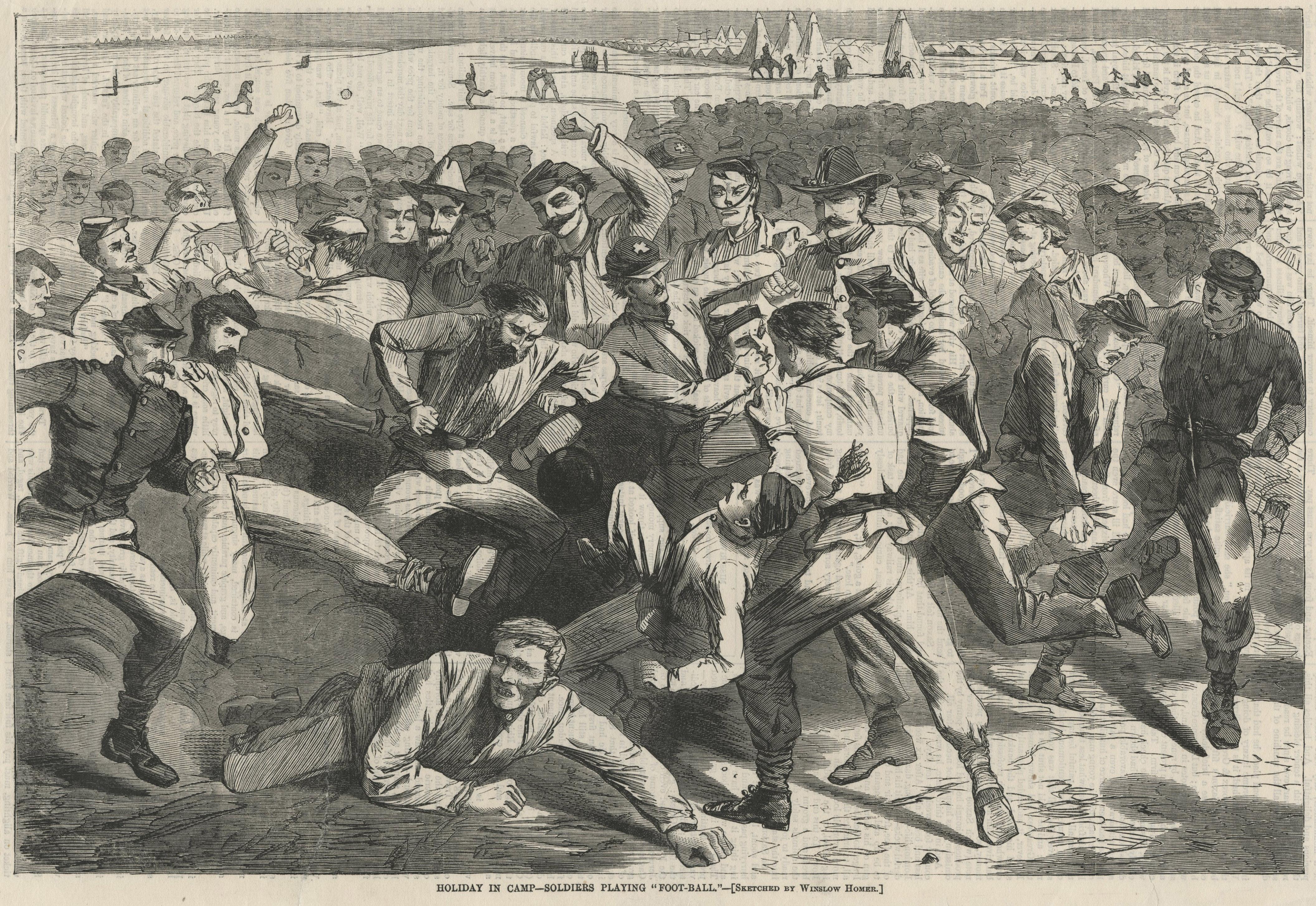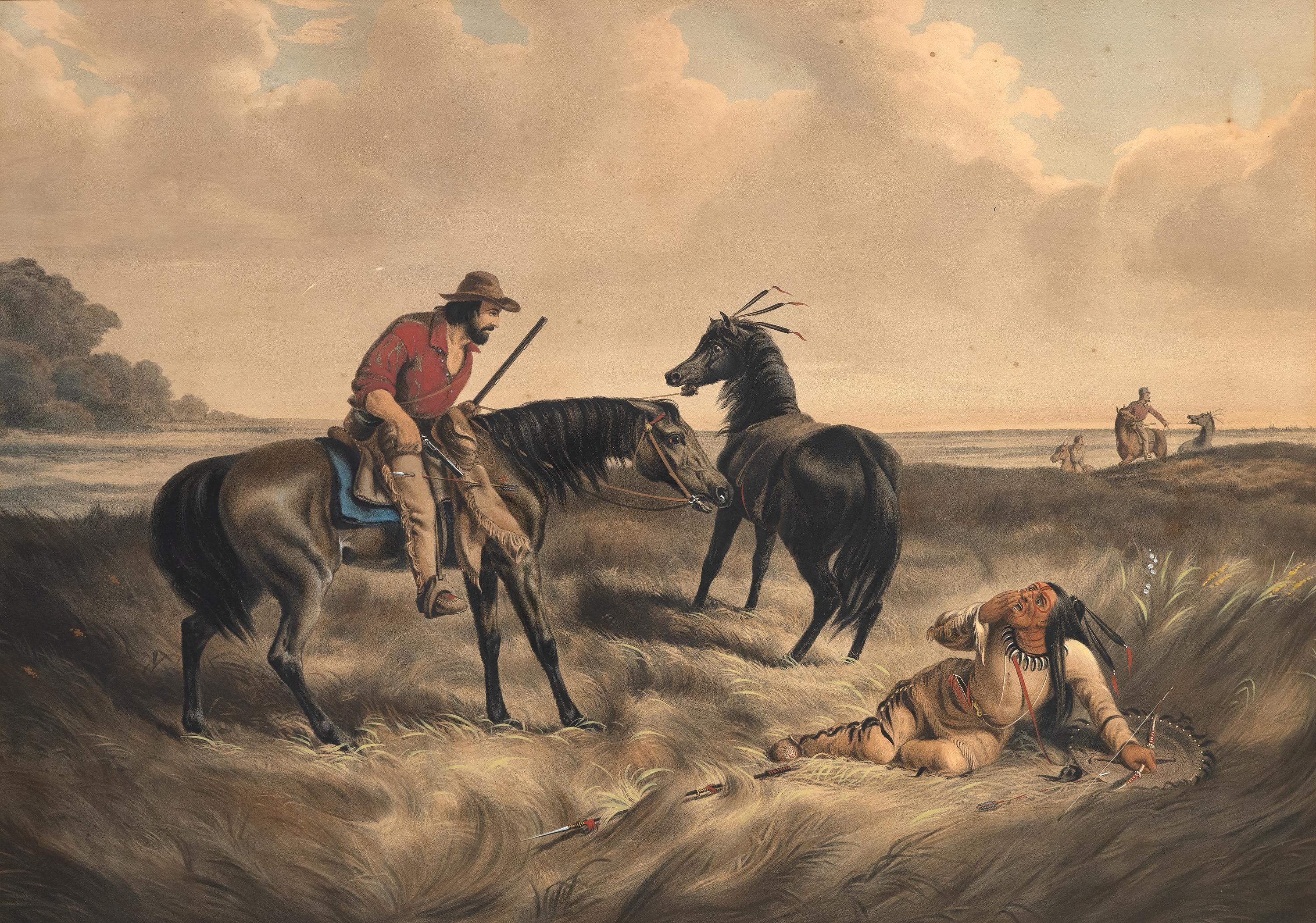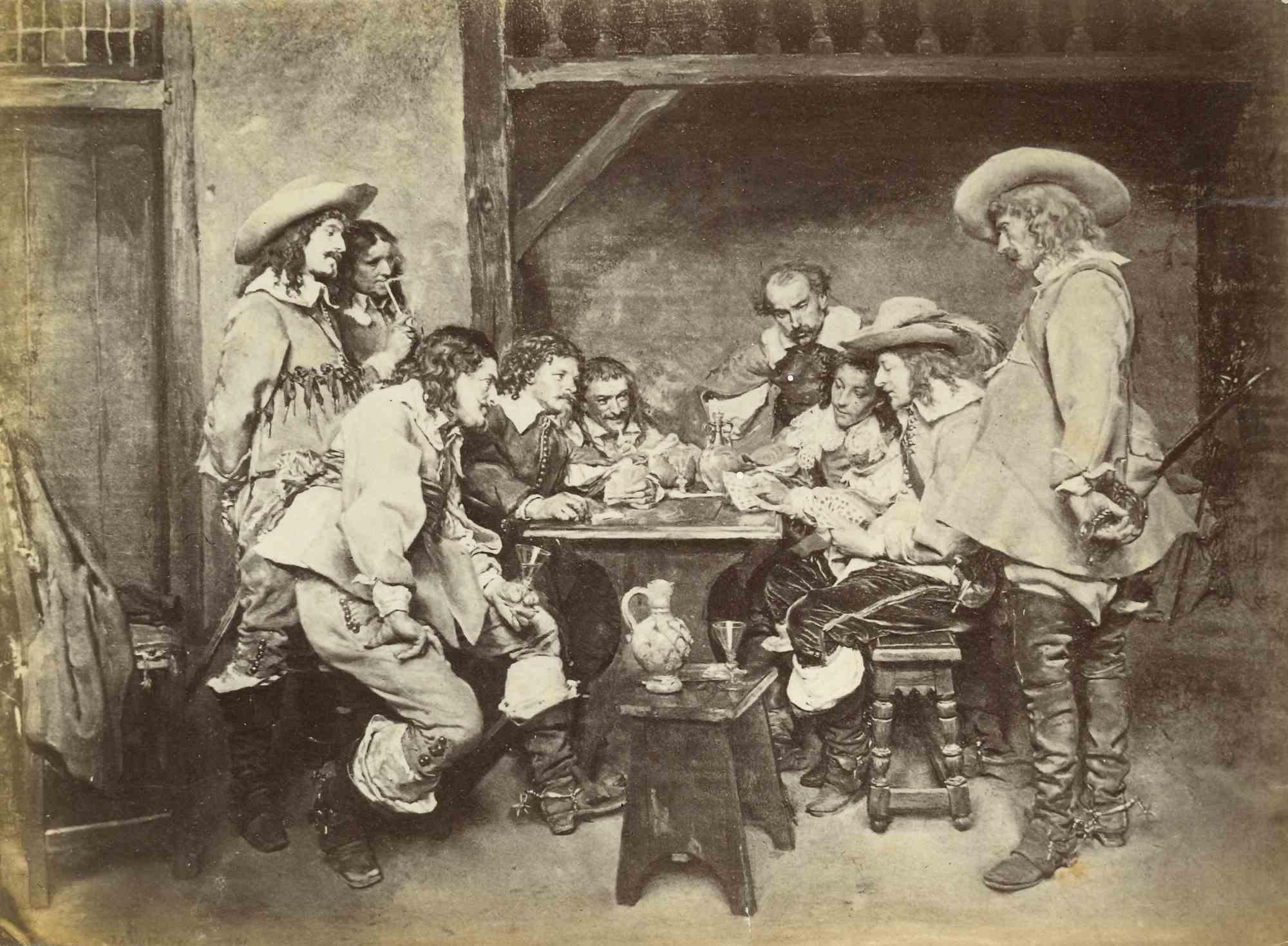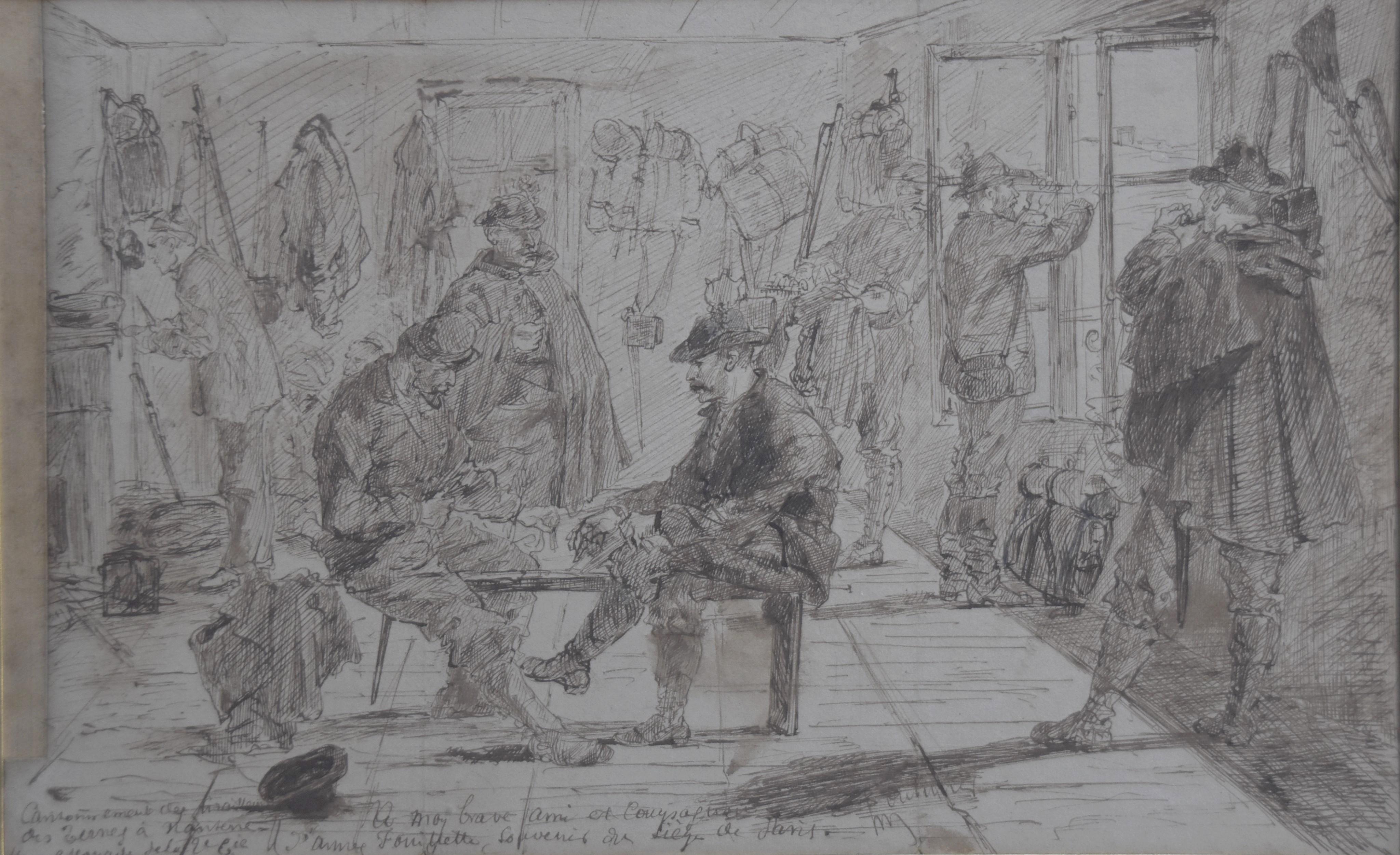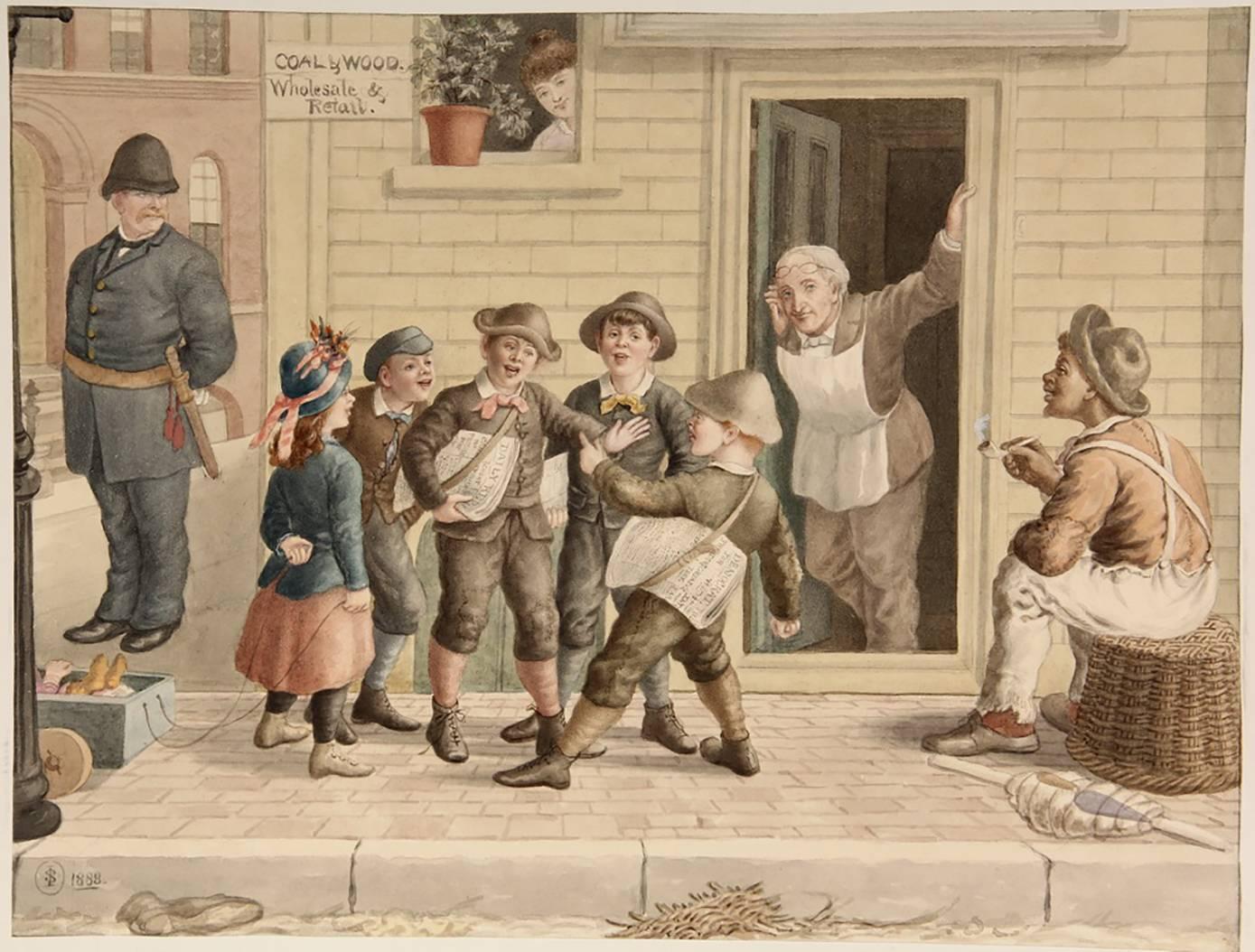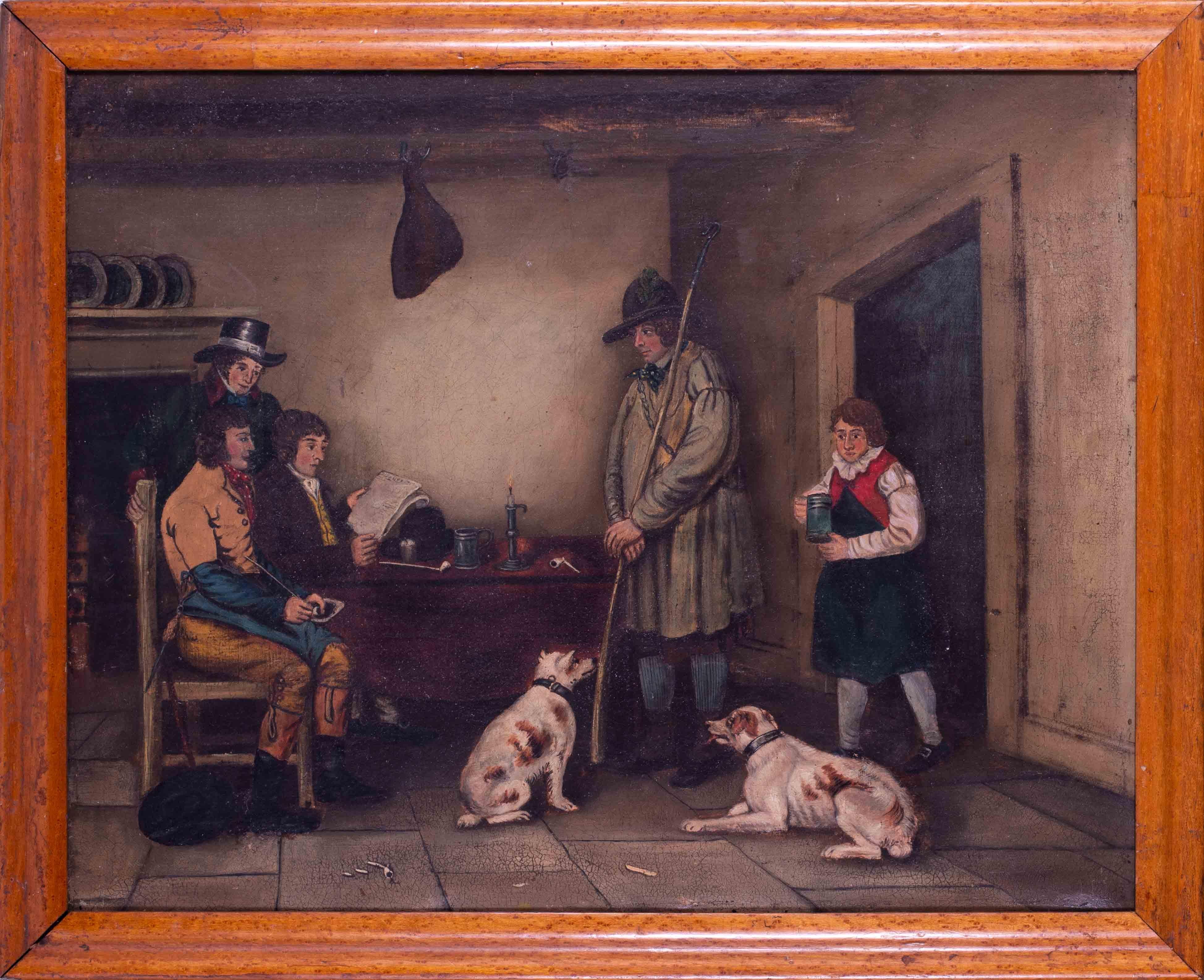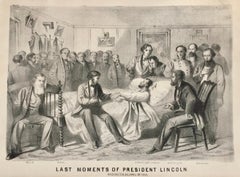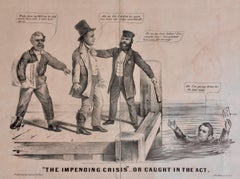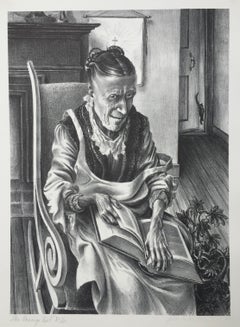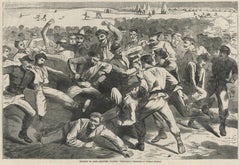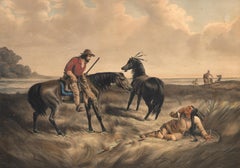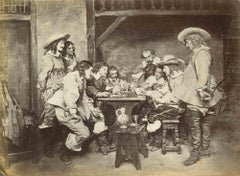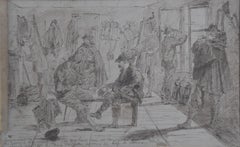Items Similar to THANKSGIVING IN CAMP
Want more images or videos?
Request additional images or videos from the seller
1 of 5
THANKSGIVING IN CAMP1864
1864
$175
$37553% Off
£135.80
£29153% Off
€153.33
€328.5553% Off
CA$250.41
CA$536.5953% Off
A$273.24
A$585.5253% Off
CHF 141.37
CHF 302.9353% Off
MX$3,268.79
MX$7,004.5553% Off
NOK 1,785.80
NOK 3,826.7153% Off
SEK 1,676.84
SEK 3,593.2253% Off
DKK 1,145.07
DKK 2,453.7253% Off
About the Item
AFTER - WINSLOW HOMER (1836-1910)
THANKSGIVING IN THE ARMY - After Dinner: the Wishbone, 1864
Original wood engraving as published by Harpers Weekly December 3, 1864, after a drawing by Winslow Homer. Image 9 3/4" x 14, Sheet 10 3.\/4 x 15 3/4" . Generally good condition, a small stain in the upper right margin.
Homer contributed drawings to Harper's Weekly from 1857 to 1875. They were converted to wood engravings by Harper's craftsman and published in Harper's Weekly. Although after his original drawings, they are now accepted as an important part of his body of work by museums and collectors. They were very large editions. As such, they occur often in the marketplace. Harper's published during the Civil War years as this was, were widely read and kept as people followed the war first hand and its aftermath over the years continuing today as both Homer and Civil War collectables
- Creation Year:1864
- Dimensions:Height: 9.25 in (23.5 cm)Width: 14 in (35.56 cm)
- Medium:
- Movement & Style:
- After:Winslow Homer (1836 - 1910, American)
- Period:
- Condition:
- Gallery Location:Santa Monica, CA
- Reference Number:1stDibs: LU41135320791
About the Seller
5.0
Recognized Seller
These prestigious sellers are industry leaders and represent the highest echelon for item quality and design.
Platinum Seller
Premium sellers with a 4.7+ rating and 24-hour response times
Established in 1977
1stDibs seller since 2016
296 sales on 1stDibs
Typical response time: 1 hour
Associations
International Fine Print Dealers Association
- ShippingRetrieving quote...Shipping from: Santa Monica, CA
- Return Policy
More From This Seller
View AllLAST MOMENTS OF PRESIDENT LINCOLN
Located in Santa Monica, CA
J. F. BUFFORD PUBLISHER and PRINTER
LAST MOMENTS OF PRESIDENT LINCOLN, April 15, 1865
Lithograph, very good impression. The 2 lower publishing lines ...
Category
1860s American Realist Figurative Prints
Materials
Lithograph
CURRIER & IVES - 1860 LINCOLN ELECTION CAMPAIGN
By Currier & Ives
Located in Santa Monica, CA
CURRIER & IVES (LOUIS MAURER)
1860 LINCOLN ELECTION CAMPAIGN
THE IMPENDING CRISES - OR CAUGHT IN THE ACT, 1860 (C.3033, G.3270)
Lithograph...
Category
1860s Other Art Style Figurative Prints
Materials
Lithograph
THE EVANGELIST
Located in Santa Monica, CA
JOHN STOCKTON DE MARTELLY (American 1903 - 1980)
THE EVANGELIST, 1941 (Zink 19)
Lithograph, signed, dated and numbered 80/100 in pencil below image. Signature and date in lighter pencil. Image. Very Good Condition. image, 13 1/2 x 9 3/4". Full sheet with deckle edges, 16 x 11 3/4". The Evangelist apparently represents de Martelly's New Hampshire neighbor Lizzy Osgood. De Martelly worked in an American Regionalist Style, often depicting his New Hampshire neighbors. He was associated with Thomas Hart Benton at the Kansas City Art Institute. Most of de Martelly's regionalist prints were published by Associated American Artists in editions of 250. This lithograph is scarcer in an edition of only 100. He became an art professor at Michigan State University. After the 1940's de Martelly abandoned his Regionalist style for abstraction.
Roger Genser...
Category
1940s American Realist Figurative Prints
Materials
Lithograph
$680 Sale Price
20% Off
AMERICA
By John Speed
Located in Santa Monica, CA
IMPORTANT AMERICAN MAP - ONE OF THE FIRST TO SHOW CALIFORNIA as an ISLAND
JOHN SPEED (1552-1629)
AMERICA - With Those Known Parts In That Unknown Worlde (sic),
1626-(76)
(Burden 217 iv/iv) Engraving, uncolored. Engraved by Abraham Goos and
published by Thomas Basset and Richard Chiswell - 4th state of 4 in 1676
15 1/8 x 20 1/2” From “A Prospect of the Most Famous Parts of the
World”. Generally good condition. A repaired split in lower centerfold. This
is the most common version of this important map...
Category
1620s Old Masters Landscape Prints
Materials
Engraving
$4,000 Sale Price
52% Off
MANHATTAN
By Anton Schutz
Located in Santa Monica, CA
ANTON SCHUTZ
MANHATTAN c 1940
Etching, signed in pencil, edition 100, no. 15/100. On thin simili-japan paper. Very slight toning around plate mark. Remnants of old tape on verso, s...
Category
1940s American Realist Landscape Prints
Materials
Etching
THOMAS HART BENTON
By Harry Sternberg
Located in Santa Monica, CA
HARRY STERNBERG (American, 1904-2001)
THOMAS BENTON, 1943. Color screenprint on gray card stock wove paper. Edition of 30. Signed "Benton by Sternberg" in ink, by hand by the artist...
Category
1940s American Modern Figurative Prints
Materials
Screen
You May Also Like
Holiday in Camp -- Soldiers Playing "Foot-Ball"
By Winslow Homer
Located in Fairlawn, OH
Holiday in Camp -- Soldiers Playing "Foot-Ball"
Wood engraving, 1865
After Winslow Homer
Unsigned
(Signed in text in title caption, see photo)
Published in Harper's Weekly July 15, 1...
Category
1860s American Realist Figurative Prints
Materials
Engraving
The Last War-Whoop!
By Currier & Ives
Located in Palm Desert, CA
"The Last War-Whoop!" is a lithograph by Currier & Ives. The framed size is 26 x 32.62 x 1.25 inches.
Provenance:
Private Collection
Category
Late 19th Century American Realist Landscape Prints
Materials
Lithograph
Vintage Photo Of A Painting - Mid-20th Century
Located in Roma, IT
Vintage Photograph Of A Painting on a paper, Seppia colored photograph, realized in the mid-20th century.
Good conditions.
Category
Mid-20th Century Modern Figurative Photography
Materials
Photographic Paper
$142 Sale Price
40% Off
Episode of the Franco-Prussian war of 1870, a cantonment of soldiers, drawing
Located in Paris, FR
French School 19th Century
Episode of the Franco-Prussian war of 1870, a cantonment of soldiers during the siege of Paris
Pen and brown ink on paper
15 x 23 cm
Annotated on the lower...
Category
1870s Realist Interior Drawings and Watercolors
Materials
Ink
Political Partisans
Located in Fort Washington, PA
Date: 1888
Medium: Watercolor on Paper
Dimensions: 19.00" x 23.00"
Signature: "IS" Monogram and Date of 1888 lower left
a colloquial scene of newsboys arguing on a street, with "IS"...
Category
1880s Figurative Drawings and Watercolors
Materials
Paper, Watercolor
Early 19th Century, English provincial school, 'Travellers at the inn
Located in Petworth, West Sussex
English Provincial School, early 19th Century
Travellers at an inn
Oil on canvas
17 x 21 in. (43.2 x 53.3 cm.)
Category
19th Century English School Figurative Paintings
Materials
Canvas, Oil
